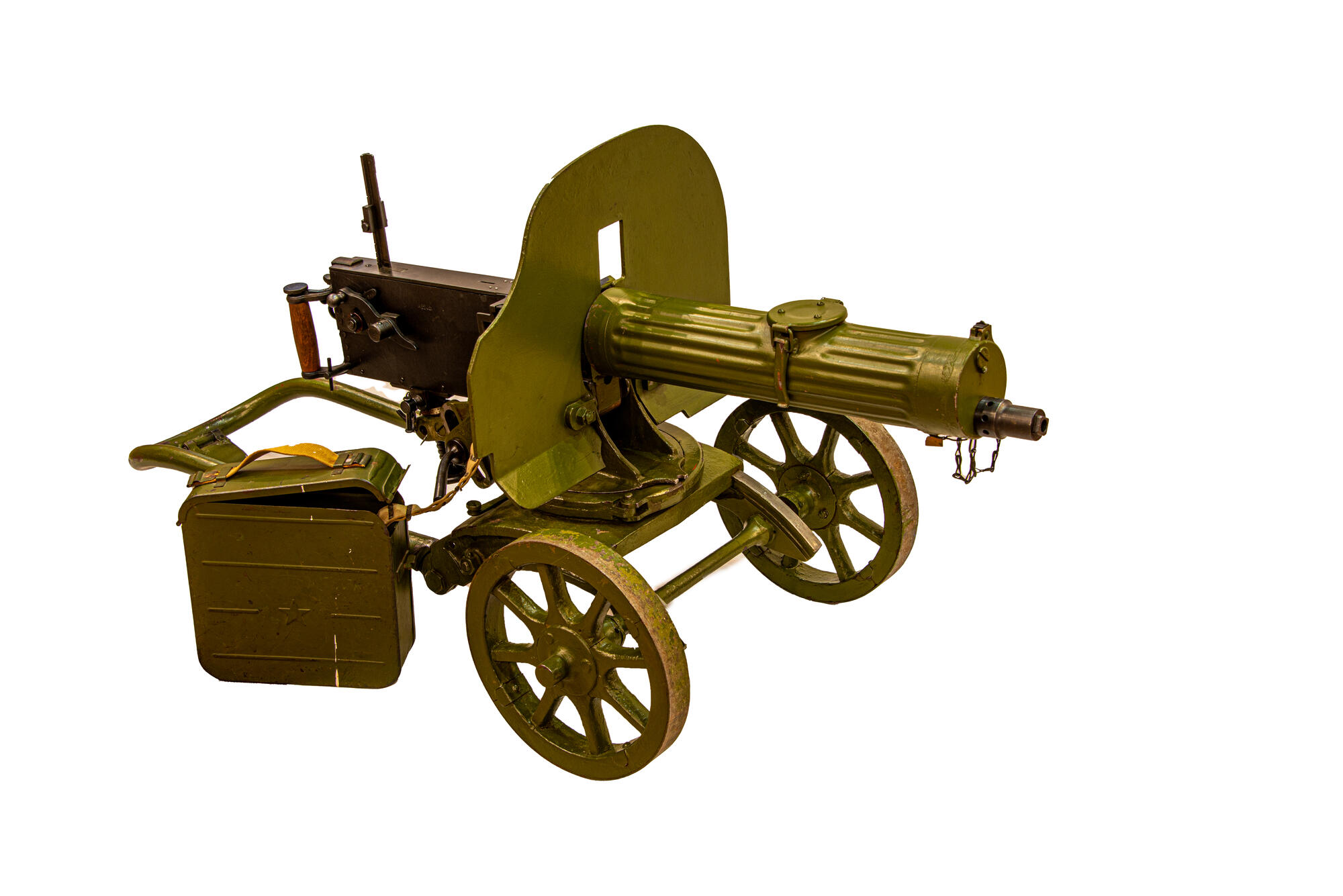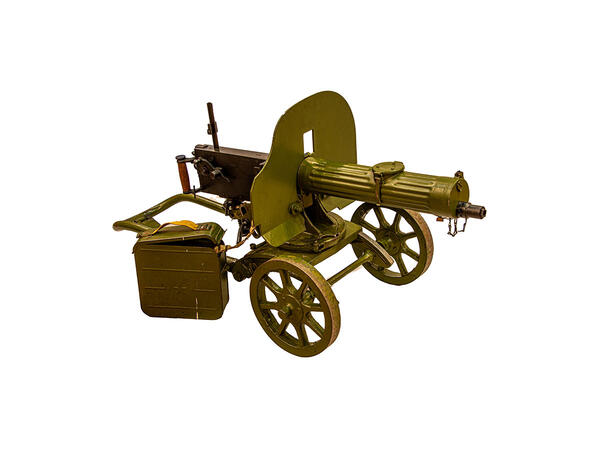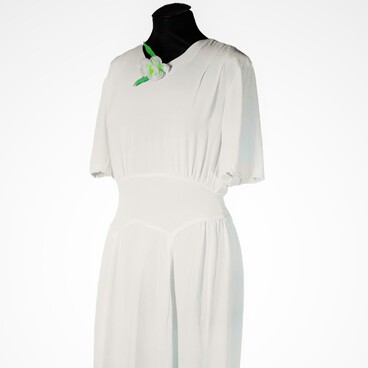Maxim machine gun is one of the most common types of weapons. It was used in the Russian-Japanese War, World War I, and Civil Wars, during the revolutionary events of 1917, in the Soviet-Finnish War, and then in the Great Patriotic War. The machine gun was created by the British designer Hiram Stevens Maxim in 1883.
Maxim personally presented his invention in Russia. In 1888, Alexander III shot from it. After the test, the military department ordered 12 machine guns from the designer. And in 1901, a 7.62 mm Maxim machine gun on movable support (wheeled carriage) was adopted by the field troops.
Mass production of machine guns began in March 1904 at the Tula Arms Factory. In 1909, the model was modernized: the wheel mount of Alexander Sokolov replaced the carriage — and the machine gun acquired a familiar look for our days.
The 1909 changes were designed to make the machine gun lighter. Therefore, some parts that were previously made of bronze: the barrel casing, carrying handles, and others were replaced with by steel ones. In addition, the barrel sight, stock and buttstock were changed to soften the recoil.
The appearance of new weapons on the battlefield brought adjustments to the patterns of warfare. It was effectively used to suppress mass attacks, cover withdrawal operations and protect stationary points.
Later, the machine gun was improved several more times, but Pavel Tretyakov, Konstantin Rudnev, and other designers and mechanical engineers carried out the largest modernization in 1930. The safety switch was moved to the trigger and the the fighters could switch modes and open fire with one hand. The new improved model was called the ‘Maxim system machine gun of 1910/30’.
During the Soviet-Finnish War of 1939-1940, not only designers and manufacturers but also the soldiers themselves tried to make minor improvements to the machine gun. In winter, the machine gun was mounted on skis, sleds, or drag boats, which were used to move it in the snow and fire it if necessary. In the winter of 1939-1940, Maxim machine guns were sometimes installed on the roofs of tank turrets and fired at the enemy, supporting the advancing infantry.
However, by the end of the 1930s, the design of the machine gun became outdated. It was replaced by the DS-39 machine gun. But it was not so reliable. Therefore, when the Great Patriotic War began, in June 1941, the enterprises were ordered to produce Maxim machine guns again.
Maxim personally presented his invention in Russia. In 1888, Alexander III shot from it. After the test, the military department ordered 12 machine guns from the designer. And in 1901, a 7.62 mm Maxim machine gun on movable support (wheeled carriage) was adopted by the field troops.
Mass production of machine guns began in March 1904 at the Tula Arms Factory. In 1909, the model was modernized: the wheel mount of Alexander Sokolov replaced the carriage — and the machine gun acquired a familiar look for our days.
The 1909 changes were designed to make the machine gun lighter. Therefore, some parts that were previously made of bronze: the barrel casing, carrying handles, and others were replaced with by steel ones. In addition, the barrel sight, stock and buttstock were changed to soften the recoil.
The appearance of new weapons on the battlefield brought adjustments to the patterns of warfare. It was effectively used to suppress mass attacks, cover withdrawal operations and protect stationary points.
Later, the machine gun was improved several more times, but Pavel Tretyakov, Konstantin Rudnev, and other designers and mechanical engineers carried out the largest modernization in 1930. The safety switch was moved to the trigger and the the fighters could switch modes and open fire with one hand. The new improved model was called the ‘Maxim system machine gun of 1910/30’.
During the Soviet-Finnish War of 1939-1940, not only designers and manufacturers but also the soldiers themselves tried to make minor improvements to the machine gun. In winter, the machine gun was mounted on skis, sleds, or drag boats, which were used to move it in the snow and fire it if necessary. In the winter of 1939-1940, Maxim machine guns were sometimes installed on the roofs of tank turrets and fired at the enemy, supporting the advancing infantry.
However, by the end of the 1930s, the design of the machine gun became outdated. It was replaced by the DS-39 machine gun. But it was not so reliable. Therefore, when the Great Patriotic War began, in June 1941, the enterprises were ordered to produce Maxim machine guns again.



